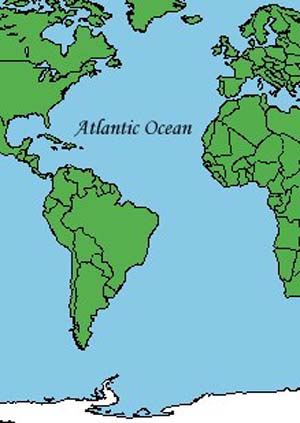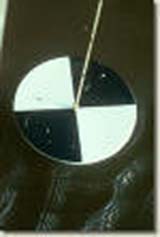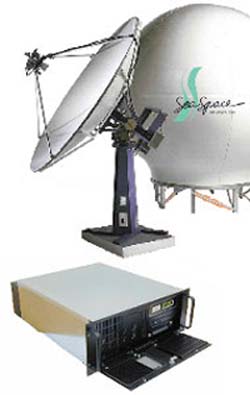ONR Satellie Imagery Research Team 2003-2004
"Remote Sensing of
Turbidity and Water Clarity in the Atlantic Ocean with the
use of SeaWiFS Data"

Turbidity
can be defined as the cloudiness of water, caused by suspended materials.
The greater the amount of total suspended solids in the water, the higher
the measured turbidity. Causes of turbidity include soil erosion, waste
discharge, urban runoff, and algal growth.
Highly turbid ocean waters are those with a large number of scattering
particulates in them. In both highly absorbing and highly scattering waters,
visibility into the water is reduced. The highly turbid water still reflects
light while the highly absorbing water is very dark. The scattering particles
that cause the water to be turbid can be composed of many things, including
sediments and phytoplankton.
The fishing industry is dependent upon knowledge of small variations in
water temperature and visibility. In addition, high levels of turbidity
over long periods of time can greatly diminish the health and productivity
of the estuarine ecosystem. Turbid waters decrease light penetration into
the water, thereby reducing the area available for submerged aquatic plants
to grow. As turbidity increases, water loses its ability to support diverse
aquatic organisms. Turbidity also warms water by absorbing heat, blocks
photosynthesis, irritates and clogs gills of fish, and decreases visibility
for predators and prey.
The frequency and extent of turbidity events in the Atlantic Coast was
studied. SeaWiFS Ocean Color data was utilized to generate secchi disk
depth estimates. Those estimates were then used to study water clarity
and for analysis of turbidity events. TeraVision was used for processing
and analyzing data. SeaWiFS datasets were provided by the Center of Excellence
in Remote Sensing Research and Education (CERSER), located on the campus
of Elizabeth City State University.

Secchi Disk

TeraScan System